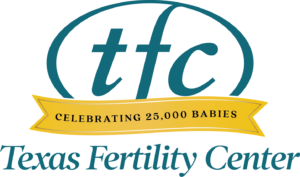
A gonadotropin cycle involves injections and IUI
A gonadotropin cycle begins with a baseline ultrasound during your period to make sure that you do not have any ovarian cysts. From there, the process consists of a few steps.
- Injectable medications to spark growth of several follicles containing eggs
- A trigger injection to cause ovulation to happen
- Intrauterine insemination (IUI) to deliver the sperm to the egg
Injectable gonadotropins are much more powerful than oral fertility medications (clomiphene or letrozole). For this reason, careful and frequent monitoring must be performed to reduce the risk of both multiple gestation and ovarian hyperstimulation syndrome.
We pride ourselves on providing best-in-class patient education. Prior to starting a gonadotropin cycle, you will be given materials to read, videos to watch, and a personalized injection lesson taught by one of our clinical staff.
What’s involved in a gonadotropin cycle?
At your baseline ultrasound, your physician will make sure that there are no cysts or other issues present that may cause the medications to not work effectively. Cysts can be hormonally active and, due to their size, can prevent or limit the development of ovarian follicles. They might also be stimulated by the gonadotropins and grow in response to your injections, leading to pain and a suboptimal response.
When things look clear to start, you will review your proposed treatment cycle with your physician and clinical team. In addition to answering your questions and making sure that you are prepared to proceed, these sessions are designed to make sure that you will be able to give these medications to yourself at home. If you are uncomfortable with giving yourself injections, we can arrange to teach your partner or a friend.
Gonadotropin cycles are powerful and must be monitored closely
While you are taking gonadotropins, you will need to be monitored closely, with regularly scheduled vaginal ultrasound examinations and by blood estrogen levels. These procedures will be performed every two to three days while you are using the medications.
The ultrasound exams and estrogen levels allow your physician to determine the optimal dose of medication to give you each day to maximize your chance for pregnancy, while minimizing your risk of multiple gestation.
When your follicles are mature (typically 18 mm to 24 mm in average diameter), a trigger injection called Ovidrel® will be prescribed to you. This medication causes the egg(s) to ovulate, or be released by the ovary, approximately 36 to 44 hours after the Ovidrel shot is given.
IUI delivers the highest-quality sperm to the eggs at the right time for fertilization
Collection of the sperm specimen to be used for insemination can be done in our office, or at home if necessary, so long as it is received within one hour of collection. Once the sample is dropped off at the appointed time, it takes approximately 45 minutes for our andrologists to prepare the specimen. Then it will be brought to the TFC San Antonio office for use in the IUI procedure.
Inseminations are typically no more uncomfortable than a pap smear. They take approximately 30 to 60 seconds to perform, and we will then ask you to rest comfortably for about 10 minutes before you return to work or home.
Progesterone supplementation is typically prescribed
After insemination, while you are in the “two week wait” until your pregnancy test, you may be using a medication called progesterone. This medication is typically taken vaginally, for best absorption. It is prescribed to keep progesterone levels elevated in the second half of your cycle, and is commonly used in gonadotropin cycles.
If you are pregnant, you may continue to take the progesterone until approximately eight to 10 weeks of gestation, unless your hormones are sufficient to support the pregnancy on their own.
Trust the intrauterine insemination experts
Texas Fertility Center has been a leader in fertility treatment since the 1980s, even publishing work relating to optimizing gonadotropin/IUI cycles. Our research was integral in changing the way that gonadotropin/IUI cycles are performed. Call now to schedule an appointment with our San Antonio fertility specialists.


